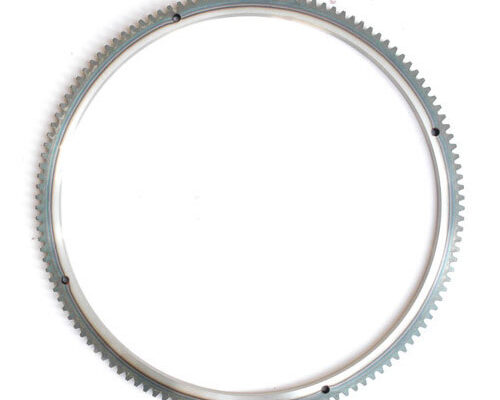Ring gears, crucial components in the realm of mechanical systems and power transmission, come in various forms tailored to distinct applications such as automotive, industrial machinery, and aerospace. This blog aims to unravel the core disparities between two fundamental types of ring gears: flywheel ring gears and planetary ring gears. By grasping their distinct characteristics, applications, and advantages, we can gain a profound understanding of their pivotal roles in contemporary engineering.
Flywheel Ring Gears
Flywheel ring gears play an indispensable role in the inner workings of internal combustion engines. They are typically affixed to the engine’s flywheel, which, in turn, is linked to the engine’s crankshaft. These gears are pivotal for the engine’s ignition process as they engage with the pinion gear of the starter motor. When the starter motor activates, it sets the flywheel in motion, facilitating the engine’s cranking and subsequent ignition.
Key Features of Flywheel Ring Gears:
Tooth Design: Flywheel ring gears typically boast a larger quantity of teeth that are uniformly spaced along the outer circumference of the gear. This design guarantees a seamless and efficient transmission of power during engine startup.
Material: Given the high-torque nature of engine starting, flywheel ring gears are predominantly constructed from sturdy materials like steel or cast iron, ensuring resilience against the stresses and wear associated with this operation.
Application: These gears are primarily deployed in internal combustion engines, spanning a broad spectrum from automobiles and trucks to industrial engines.
Mass Balancing: Careful mass balancing is employed in the fabrication of flywheel ring gears to minimize vibrations and assure the engine’s smooth operation.
Planetary Ring Gears
In contrast, planetary ring gears form a critical component of planetary gear systems, a prevalent gear arrangement found in a multitude of machinery and vehicles. Planetary gears, in essence, encompass a central sun gear, planetary gears, and the outer ring gear. It is the ring gear that warrants our focus.
Key Features of Planetary Ring Gears:
Configuration: Planetary ring gears are distinct due to their ring-shaped appearance and serve as an integral component within planetary gear systems. They encircle the planetary gears, interlinking with both the sun gear and the planetary gears.
Versatility: Planetary gear systems, including planetary ring gears, enjoy diverse applications, extending from automatic transmissions in automobiles to robotic arms and even Mars rovers.
Compactness: Renowned for their compact design and high torque output, planetary gear systems are particularly well-suited to environments where spatial constraints are paramount.
Gear Reduction: Planetary gear systems offer an extensive array of gear reduction possibilities, making them ideal for tasks necessitating precise control over speed and torque.
Key Disparities
Having explored the fundamentals of both flywheel and planetary ring gears, let’s now underscore the key distinctions between these two pivotal gear types.
Application: The paramount distinction rests in their principal application. Flywheel ring gears are exclusively reserved for facilitating engine ignition in internal combustion engines, while planetary ring gears have a much broader reach, extending to applications including automatic transmissions, robotics, and aerospace.
Tooth Design: Flywheel ring gears tend to possess a more substantial number of uniformly spaced teeth to ensure the smooth initiation of engine cranking, while planetary ring gears exhibit varying tooth configurations to facilitate the attainment of diverse gear ratios.
Material: Typically crafted from resilient materials like steel or cast iron to withstand the substantial torque encountered during engine ignition, flywheel ring gears contrast with planetary ring gears, which permit a more varied material selection contingent on the specific application and requisites.
Gear Arrangement: Flywheel ring gears stand as autonomous components, while planetary ring gears constitute an integral part of intricate planetary gear systems, encompassing both the sun gear and planetary gears.
Conclusion
In the realm of gears, both flywheel ring gears and planetary ring gears play irreplaceable roles, serving unique functions and applications. Flywheel ring gears ensure the seamless ignition of internal combustion engines, while planetary ring gears stand as versatile components underpinning the efficient performance of various machines and vehicles.
Comprehending these significant disparities between flywheel and planetary ring gears unveils their distinctive contributions to the domain of mechanical engineering and machinery. Whether one is a mechanical engineer tasked with designing automotive transmissions or a robotics enthusiast engaged in constructing a robotic arm, the knowledge of the appropriate gear type to employ can significantly impact the efficiency and effectiveness of the system at hand. Consequently, the next encounter with these fundamental gears will undoubtedly evoke a deeper appreciation of their indispensable role in the world of modern mechanical engineering.




